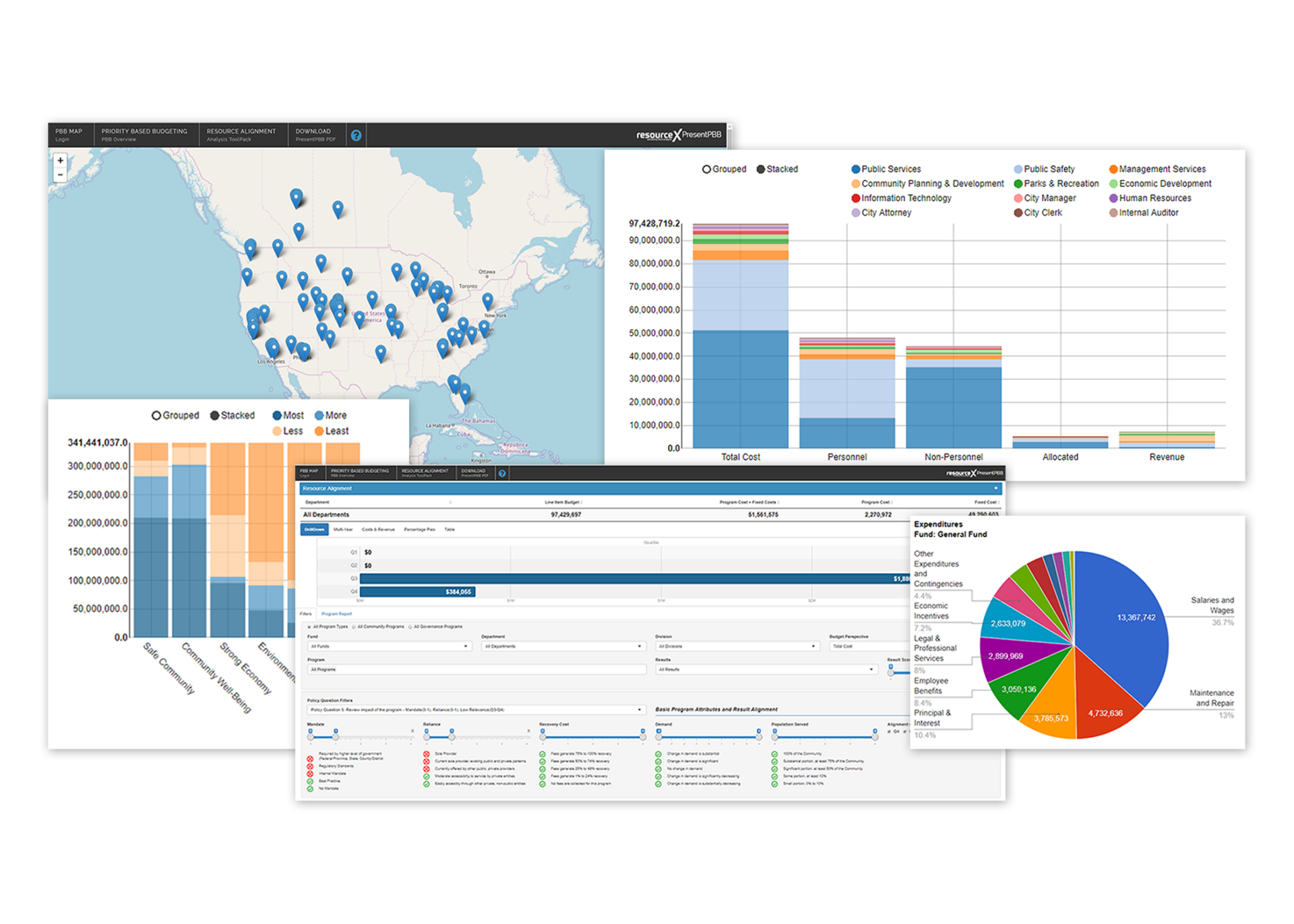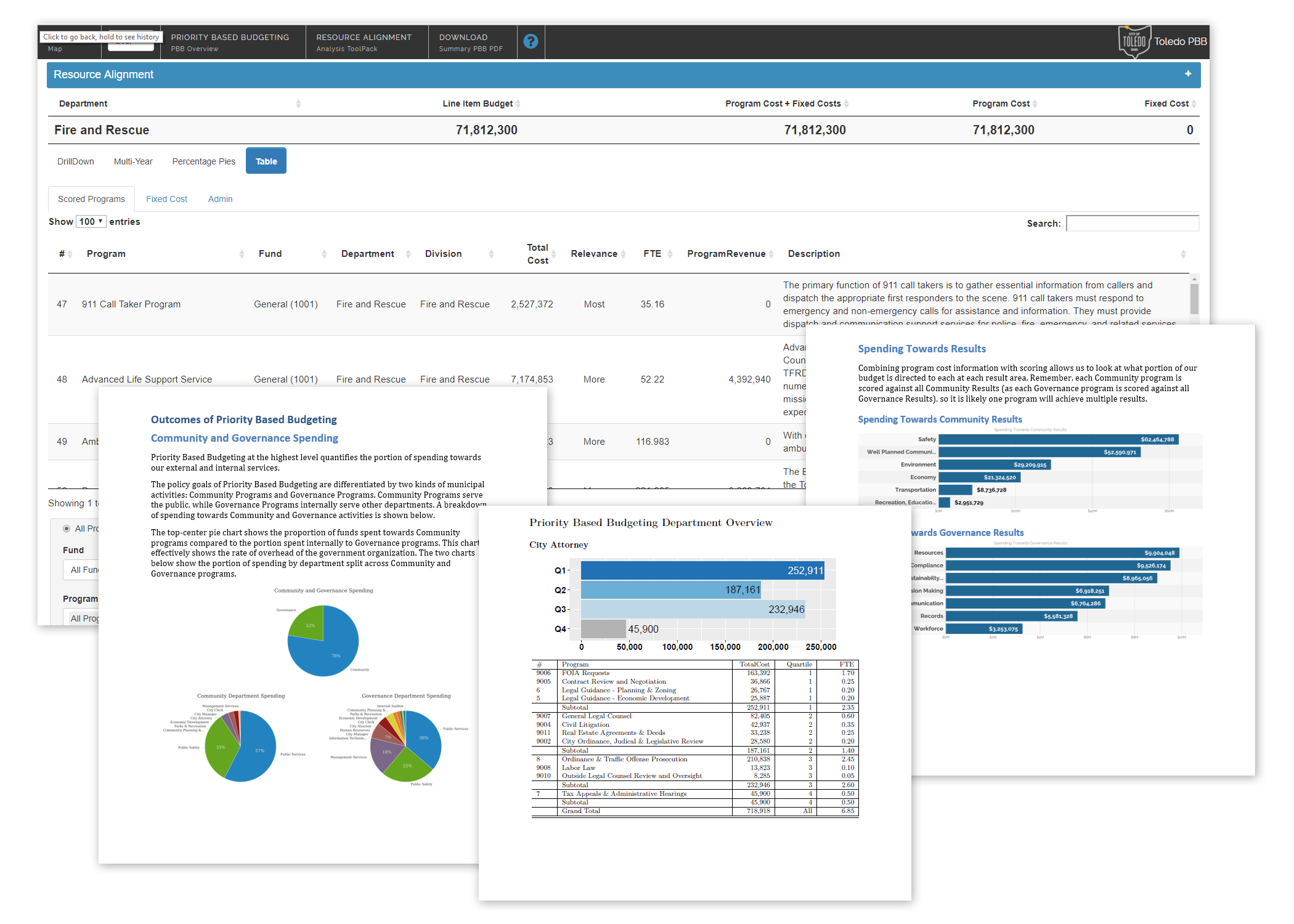ResourceX aspires to change the way local governments approach budgeting and resource allocation.
Local government budgets are often line item budgets consisting of 100’s if not 1000’s of organized account codes. It’s a good structure for book keepers but not the easiest to understand for decision makers. Priority Based budgeting is a newer budgeting process and best-practice. It maps the finance officer’s account codes to a program budget. Priority Based Budgeting apportions a price-tag to each program, scored and ranked relative to societal objectives.



